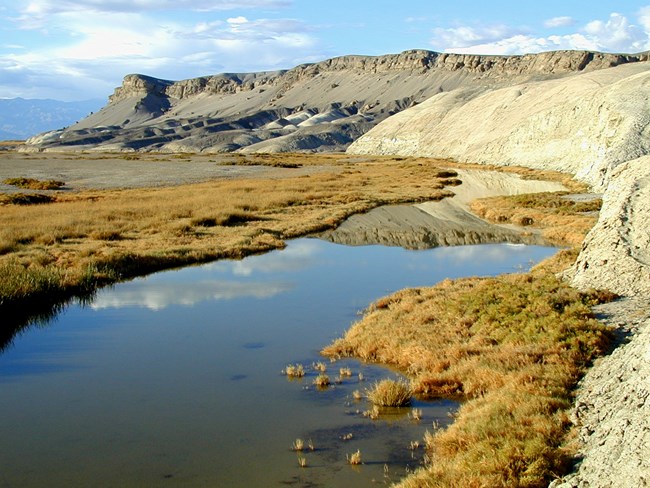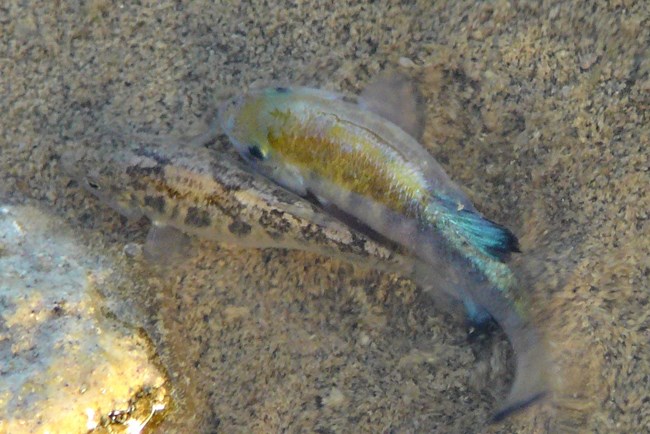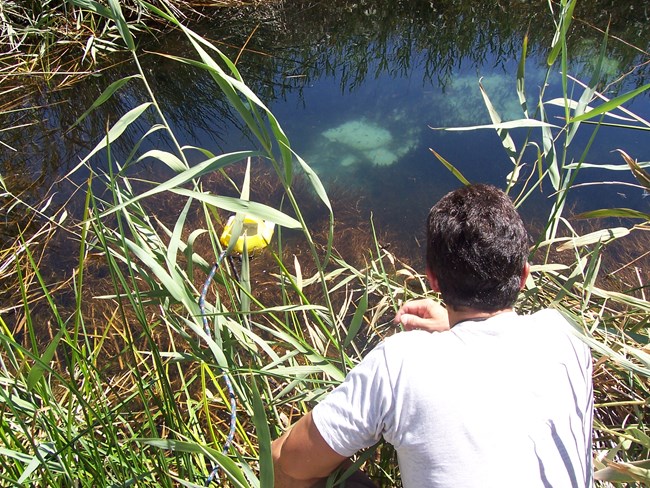
NPS photo Oases in the DesertSprings are natural water sources that form where groundwater reaches the land surface. They can range in size from small seasonal seeps that go dry in summer to perennial streams that flow all year long and support large wetland environments. 
NPS photo Evolution IslandsWetland and riparian areas have a unique scientific value. The Death Valley & Ash Meadows area is a classic example of a plant and animal laboratory in evolution. This is due to the relatively recent development of the desert climate and a unique geologic history where large marshes and lakes were relatively plentiful as recently as 15,000 years ago. This combination of events has had the unusual result of confining several aquatic species that were probably widespread at the start of the last Ice Age to remnant wetlands that have persisted for thousands of years. The presence of the unique suite of pupfish in the Death Valley region is comparable to the presence of land tortoises and Darwin's finches on the Galapagos Islands. Both animal groups originally colonized their respective areas thousands of years ago and became isolated in separate habitats that possess different environmental conditions. Through time, natural selection and isolation transformed a limited number of ancestral lines into several unique species. The fish have, for example, developed/retained an ability to live in water that is 2.5 times more saline than seawater. Some pupfish are able to live for short periods in water temperatures equal to 107°F. Both of these adaptations are important in a desert environment where water saltiness and temperatures are significantly greater than other areas in the United States. Each type of pupfish has evolved to the extent that they are physically distinct and genetically different. This fact suggests that "each desert wetland community functions as an evolutionarily significant unit" (Sada et. al 1995). Much of the genetic and physical variability in the pupfish has been attributed to different environmental conditions that exist in different wetlands (e.g. warm spring orifices vs. cool spring outflows, high salinity vs. low salinity areas) and differences in population size which are influenced by habitat size (small springs vs. large springs). 
NPS photo Monitoring Desert SpringsRegional loss and degradation of wetland and riparian resources increases the value of pristine habitats inside Death Valley National Park. California has lost a greater percentage of its wetland acreage than any other state, with 91% of the original habitats being drained, filled, or manipulated. Nevada has lost 52% of its original wetlands, and only 0.3% of the state acreage is now classified as a wetland. Loss of riparian habitats in California, Arizona and New Mexico has been extensive enough to classify them as endangered ecosystems.
Visit our keyboard shortcuts docs for details
Learn more about desert springs in the Mojave Desert, the life they support, and how we're monitoring them. |
Last updated: October 15, 2021
